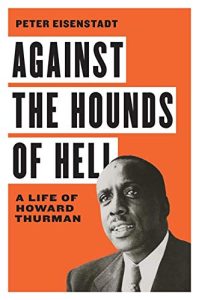
Summary: Most extensive biography of Howard Thurman to date.
I have been on a project to understand Howard Thurman over the past several years. I have read two collections of his sermons, his autobiography, a shorter religious biography, and his Jesus and the Disinherited twice. Peter Eisenstadt is well qualified to write this biography. He has an earlier book on Thurman’s trip to India and meeting Gandhi and, with Walter Fluker, is the editor of the Papers of Howard Thruman project. They have released five volumes of Thurman’s papers, and the second volume of his sermons will release next month. I am slowly working through the first book of his sermons from that collection.
Howard Thurman is one of the most important figures in 20th-century Black history that many people have not heard of. Thurman was born in 1899. His grandmother, who played an important role in raising Thurman, had been enslaved. Thurman was extraordinary, a mystic, called one of the best preachers of the 20th century by Time Magazine in the 1950s, an academic, a popularizer of non-violence, and a mentor and spiritual director to many. One of the reasons that many do not know of Thurman is that he resisted public leadership within the civil rights movement. Thurman was at Morehouse with MLK Sr, and his wife Sue Bailey Thurman was roommates at Spellman with Alberta Williams King. Similar to his role as mentor to MLK, much of his most influential work was private mentoring and spiritual direction to students or friends.
Part of what Eisenstadt, and Paul Harvey in the earlier biography, made clear is that Thurman did not believe he was successful in any of his major projects. Thurman co-started one of the first intentionally interracial churches in the US in San Francisco in 1944. After nine years, he hit a frustration point and went to Boston University as the Dean of the Chapel and a professor. At Boston University, he was able to develop a course in mysticism that was influential but was frustrated by the bureaucracy of the university and his inability to turn the chapel into the interracial and interreligious fellowship he desired to. The 15 years after Thurman’s retirement continued his writing and allowed him to mentor many, including Jessie Jackson and Derrick Bell, and many others.
Against the Hounds of Hell gave much more nuance and detail to Thurman’s life than any of the previous books on Thurman I have read. While I think it is the best biography of Thurman I have read, it is also long, so I am not sure I would use it as a starting point. But the discussion of Thurman’s books and the progression of his thinking over time was constructive in contextualizing Thruman over time.
My personal work on understanding spiritual formation and mysticism and my separate work on racial issues make Thurman a natural focus. So I will keep working through Thurman’s sermons and then read Disciplines of the Spirit and In Search for Common Ground.
Against the Hounds of Hell: A Life of Howard Thurman by Peter Eisenstadt Purchase Links: Hardcover, Kinde Edition